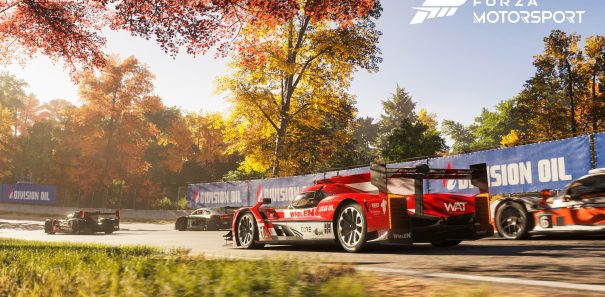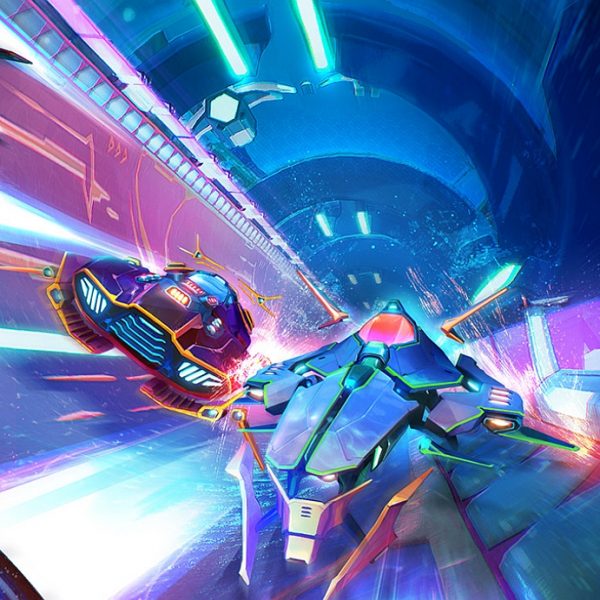Milestone is firmly established as the leading developer of bike racing games catering to a variety of disciplines, from superbike racing in MotoGP, to road bike racing in unique IP Ride. Released back in 2014, MXGP added dirt bike racing to the selection, billed as a more authentic take on the muddy world of motocross after the arcade-friendly MUD.
While the original game showed potential as a rugged off-road bike racing experience to complement its track-focused siblings, last year’s MXGP 2 was a mediocre sequel plagued with issues and was a disappointing step backwards for the series thanks to its twitchy controls, downgraded terrain deformation and uninspiring visuals. You’d be forgiven, then, for not having very high expectations for MXGP 3. Well, prepare to be pleasantly surprised, because MXGP 3 improves on its predecessor in practically every way – and it’s predominately thanks to its powerful new engine.
Unreal tournament
Motocross is an inherently exciting sport thanks to its close, contact-filled racing, challenging circuits and spectacular jumps, and these thrills have always been well replicated in the MXGP game series. Indeed, you could never accuse Milestone’s racing games of lacking authenticity, but the Italian developer’s titles have consistently lacked a level of polish we’ve come to expect in current-gen games. MXGP 3 finally changes this trend.
Whereas Milestone’s previous games ran on the developer’s increasingly dated in-house engine, MXGP 3 utilises the latest Unreal Engine 4 – and the improvements it brings are immediately apparent. Track surfaces are highly detailed compared to the blurry textures in MXGP 2, bikes leave thick trails of dust, and the more realistic lighting gives the game a grittier, more natural look. MXGP 2 looks like a cartoon in comparison.
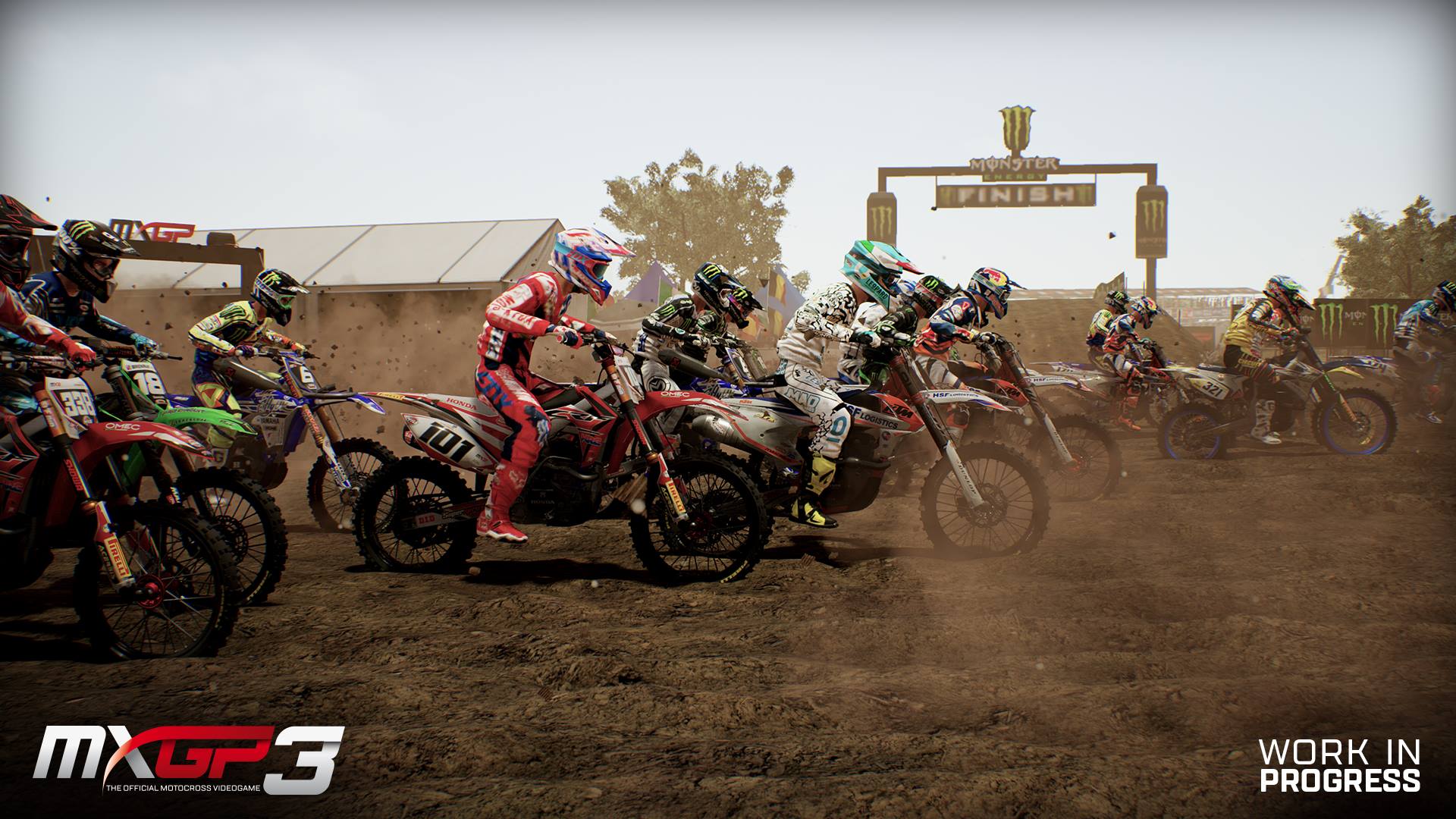
Despite the extra detail on display and having to cope with 22 riders on-screen, MXGP 3 retains a solid frame rate, only occasionally stuttering when multiple riders pile into each other – though unlike MotoGP 17 it doesn’t run at 60fps, sadly. The image sometimes looks a tad blurry, particularly during the pre-race cut scenes as the riders gather on the grid, but the upgrade to Unreal Engine 4 represents the most significant graphical leap in Milestone’s history that shows great potential for future titles. Simply put, MXGP 3 is the best-looking motocross game ever made.
Environments in Milestone games are often criticised for being too sterile, but the same can’t be said for MXGP 3. Dense crowds gather at the trackside, sound horns, wave flags and fill the air with colourful flares. These may sound like minor details, but it injects some much-needed life into the environments – something that is often lacking in modern racing games. Having said that, the crowds are far too muted – hearing roaring fans or even some commentary would give the races a more rousing atmosphere.
It’s not just the visuals that have been drastically improved thanks to Unreal Engine 4. Compared to the original game, MXGP 2’s tracks were flat and lacked any deformation whatsoever. Using the power of Unreal Engine, terrain deformation makes a welcome return in MXGP 3, and it’s more advanced than ever, while also adding an additional layer of challenge to the racing. Bikes now carve individual ruts into the surface which get deeper over time. You feel every bump, and as the track dynamically deforms it dramatically affects your bike’s handling and how you approach your racing lines to find the optimum grip.
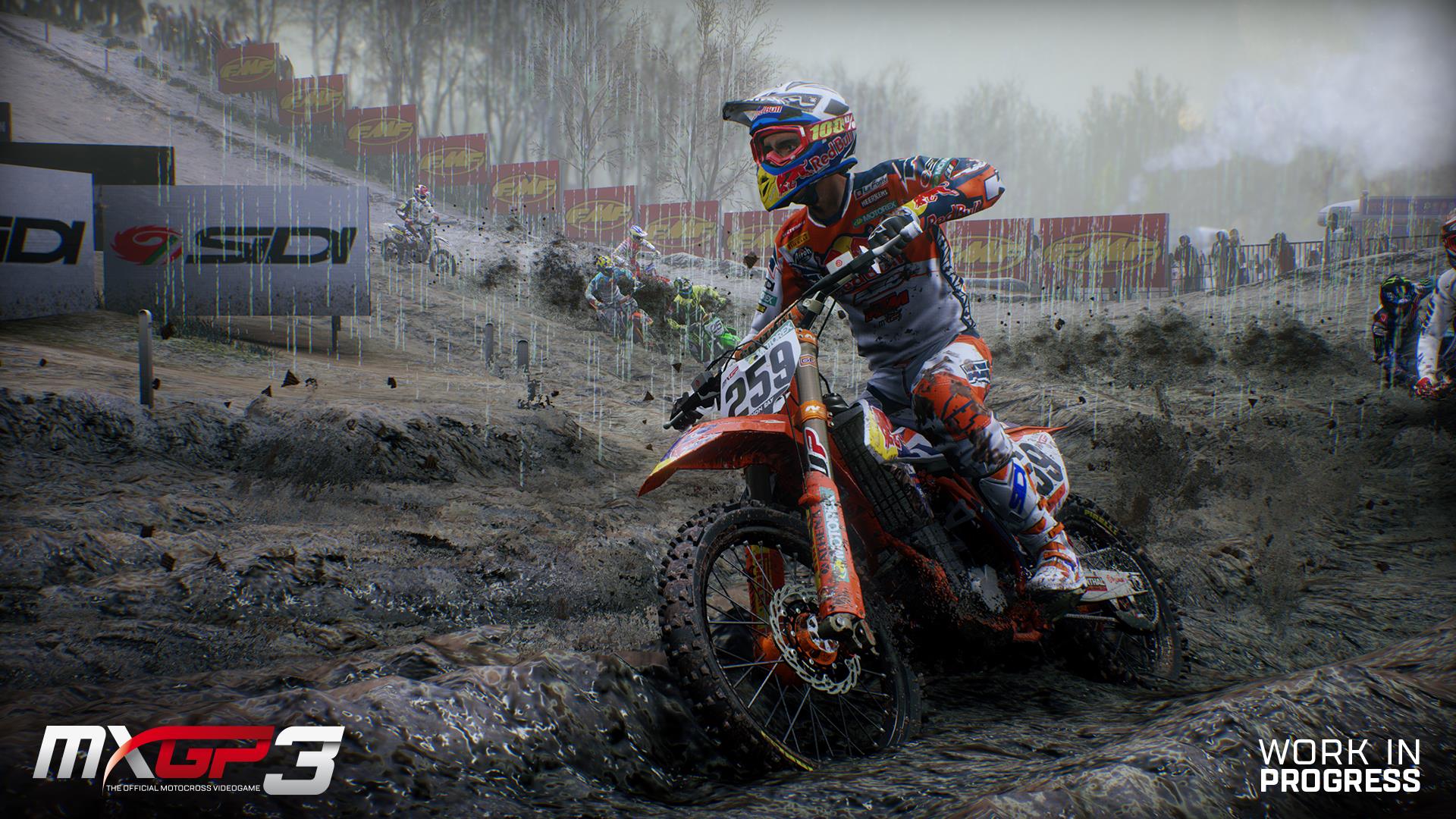
New to MXGP 3 is the addition of dynamic weather which adds some visual variety and some welcome unpredictability to the racing action, ranging from light and heavy rain to wet tracks in sunny conditions. Sudden rain showers have a noticeable effect on grip, but the handling is so intuitive it never becomes a hindrance.
Weather brings some nice visual touches, such as the way tyres flick up mud which gathers on your bike and rider, and puddles glisten in the sunlight, but the transition from dry sunny conditions to overcast skies and lashing rain can sometimes be jarringly abrupt. The weather effects are also terrible, with comically large rain droplets that look superimposed and don’t gather on the track surface or rider. Milestone was perhaps too keen to showcase the new weather effects because most of the career races in the first season have you battling against the rain.
As with every Milestone bike game, you can choose between standard, semi-pro and pro physics, with semi-pro offering the best balance between realism and accessibility. Bike handling is more responsive compared to the stiff physics in previous MXGP games, yet still feels weighty and intuitive, allowing you to attack corners with greater precision than before. Using both analogue sticks to control the bike while shifting the rider’s weight and using the rear brakes to tuck in tighter, you get the same sense of satisfaction as Ride 2 when you tear around a corner just right.
The more responsive controls also means that using the first-person camera is now a viable option – it’s arguably the most immersive way to play MXGP 3. Curiously, the helmet camera has been removed, though its implementation left a lot to be desired in MXGP 2. Having said that, it’s a shame the GoPro camera that’s selectable in the excellent replays isn’t available in-game.
It’s clear that Milestone has listened to fans and responded to feedback, because practically every issue in MXGP 2 has been addressed in MXGP 3. A common complaint in previous titles was that you had no direct control over scrubbing, a technique in motocross where the rider flicks the bike sideways over a jump. Not only does it look stylish, it shaves vital seconds off lap times by reducing airtime. Previously, scrubs played out in predetermined animations, but in MXGP 3 you can now manually execute and finish scrubs at any time. They’re satisfying to pull off, but take skill and practice to perfect – timing is vital as it’s now possible to bail if you start a scrub too early before the face of a jump.
Contact is inevitable in motocross, but the slightest tap with other riders in MXGP 2 would send you careering off your bike whilst they continued unscathed which was very frustrating. Thankfully, you’re far less likely to fall off your bike if you rub shoulders with other riders in MXGP 3 so you can be more aggressive, allowing you to have some intense battles with the aggressive AI. You won’t be reaching for the rewind button anywhere near as frequently now. While this makes the game more accessible which some purists may snarl at, the challenge created by the dynamically deforming terrain more than makes up for it.
Unlike the robotic riders in previous Milestone games which made the AI in Gran Turismo look realistic, opponents in MXGP 3 behave naturally and take multiple racing lines, resulting in some genuinely exciting races. Their pace isn’t consistent, though. Dial up the difficulty to the highest ‘Realistic’ setting, and you’ll have some memorable hard-fought battles in some races, yet be able to maintain the lead without any pressure from the opposition in others. Occasionally, opponents will also randomly steer into the nearest wall on straights, but these are all issues that can hopefully be fixed in a patch update.
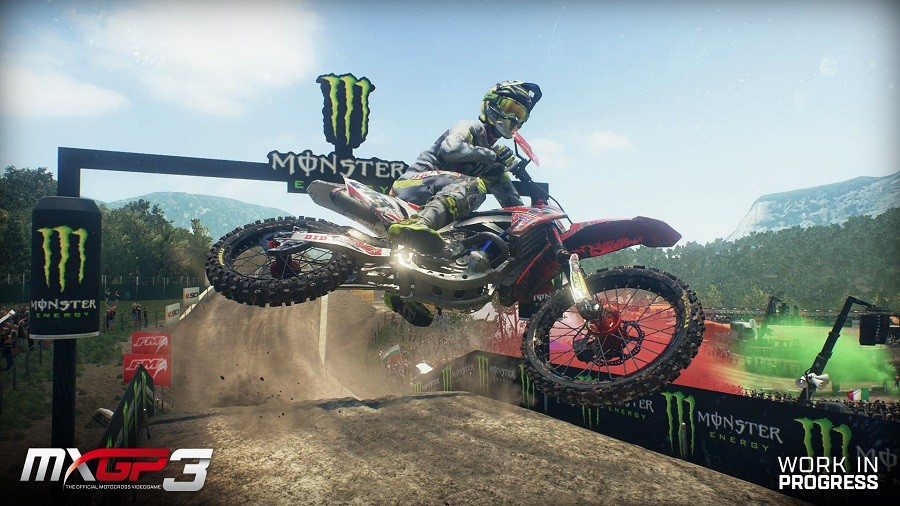
Track resets also aren’t anywhere near as jarring as they were in MXGP 2 which disrupted the flow of the race by teleporting you back onto the track from a standstill, but, like the AI, they’re still inconsistent. You can sometimes get away with cutting corners, yet other times the game will reset you for deviating slightly off the track. Engine audio, an area that has always let Milestone games down, is also noticeably more realistic: the bikes no longer sound like tractors and each bike class now has distinct audio, but the less said about the woefully generic dubstep soundtrack, the better.
Stuck in the mud
For all the strides Milestone has made in improving the core experience, it’s a shame that other aspects of the game haven’t evolved. Aside from a few UI tweaks, the career mode, for example, has barely changed since MXGP 2. It follows the same tried and tested routine as every other Milestone game released in the last few years: yes, you’re still forced to set up your custom rider as soon as you start the game, even if you just want to dive into a quick race with an official rider. Starting as a rookie rider, you work your way up starting with the entry-level MX2 class. Perform well and achieve team objectives, and you’ll attract new sponsors and team invites into the more demanding MXGP class. There’s incentive to perform well, too, as you can lose XP and, ultimately, your spot on the team if you consistently fail to meet objectives.
There’s a satisfying sense of progression as you rise the ranks through the long seasons and earn skill points for your rider, but the uninspiring presentation makes for an unengaging experience. Browsing the bland menus and reading repeated messages from your team manager updating you on your progress and team objectives gets tiresome, and there is no narration or action-packed videos of the real-life sport to liven it up. It all lacks the level of polish and innovation found in MotoGP 17’s career.
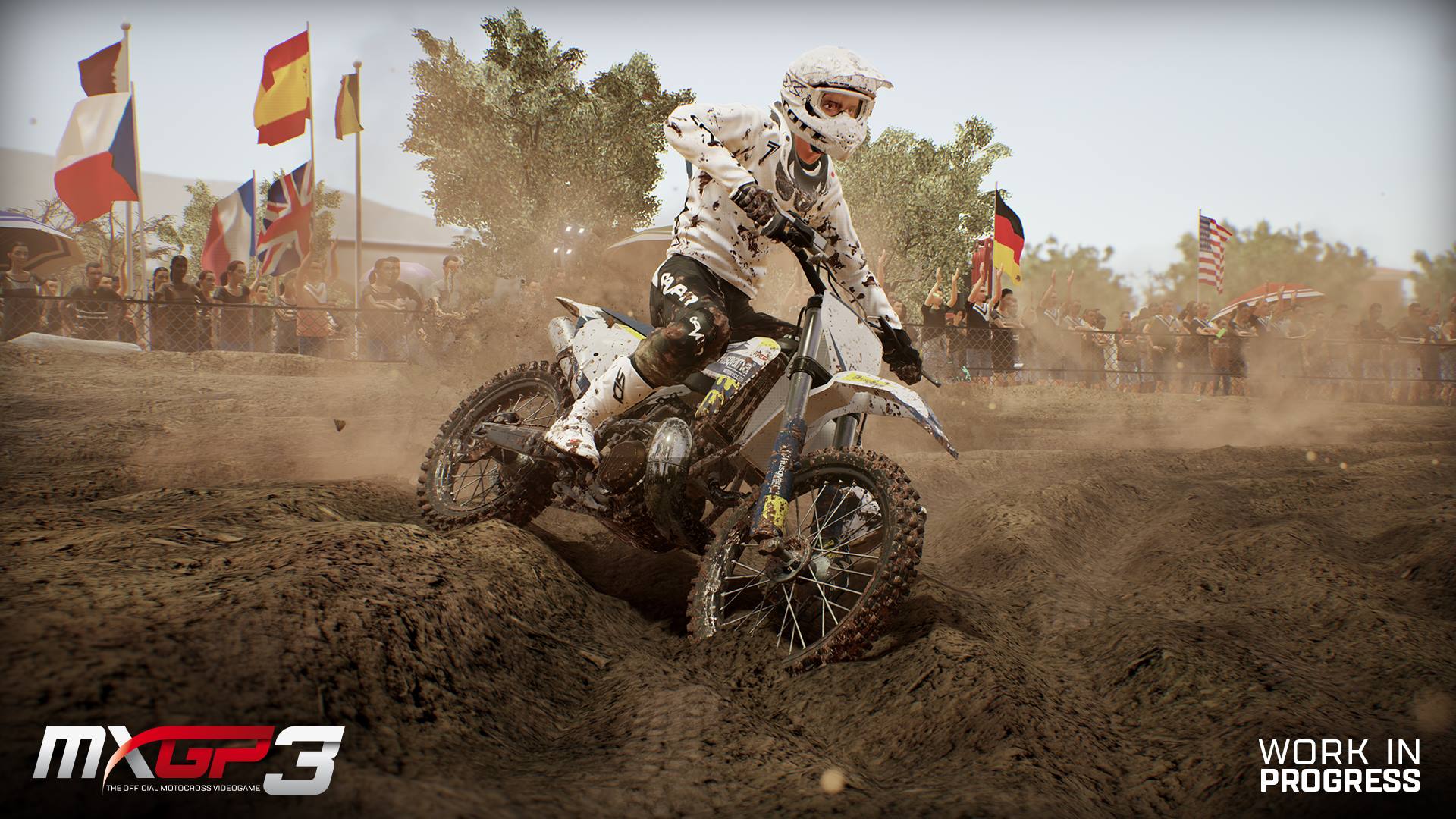
Even the tutorials, which were presented as videos with voiceovers in MXGP 2, are text-based – some interactive tutorials would have been a more effective way of teaching you the techniques, particularly for players who are more accustomed to car racing games. Alternatively, you can hone your skills in the new Compound circuit, which replaces MXGP 2’s test track. Like most Milestone games, loading times are excruciatingly excessive to the point the game reloads the same track for the second race of the weekend, though the advanced track deformation could be to blame here.
Credits earned in the career can be spent on customising your rider and bike, which has been expanded in MXGP 3 with over 300 components from real world manufacturers allowing you to upgrade everything from the brakes to the exhaust and suspension. Experienced riders can potentially spend hours exploring the wealth of cosmetic and performance options available, but upgrading your bike seems redundant when the AI can be easily beaten on the harder difficulty settings using a stock bike.
It’s also hard to ignore some of MXGP 3’s missing content. The fan-pleasing Motocross of Nations returns as a separate distraction to the career mode, and motocross fans will rejoice at the long-requested addition of two-stroke bikes which handle and sound noticeably differently to four-strokes. All the official riders are represented, and all 18 tracks on the MXGP calendar have been authentically recreated, but the supercross stadium tracks introduced in MXGP 2 are absent. To be fair, you probably won’t miss them – they weren’t licensed tracks, and have since been replaced by the superior, officially licensed Monster Energy SMX Riders Cup released as DLC.
Real Events, often a highlight in Milestone games that let you re-enact memorable moments from the real life championship, are also sorely missing. It’s a shame because without them the selection of game modes is rather sparse. A season pass is available hinting that there’s still more content to come, so don’t be surprised if Real Events also get added to MXGP 3 as paid DLC.

MXGP 3’s thrilling racing should translate well in online multiplayer for up to 12 players, but that’s sadly not the case. Hosts can select from a wealth of options from physics to track voting, but joining a game can be problematic. It’s easy enough to find an online lobby, but the servers aren’t very reliable. Host disconnects are frustratingly frequent when you try to join. And after spending a long time trying to join a game and waiting in the lobby (you can’t spectate a race to alleviate the boredom of waiting in a lobby), races are often plagued with serious lag issues.
Our Review
The good
Significantly improved graphics thanks to the upgrade to Unreal Engine 4.
Realistic track deformation.
Improved handling.
The bad
Career mode feels recycled.
Text-based tutorials don’t offer enough guidance.
No spectate option for online races.
Summary
MXGP 3’s uninspiring career mode, glaring content omissions, and inconsistent AI hold it back, but the series is heading in the right direction. Unreal Engine 4 has completely transformed the experience, from the grittier graphics to the intricate track deformation, and the racing is as thrilling as ever. As a result, MXGP 3 the most authentic, exciting and challenging motocross game released in years. Finally, Milestone is starting to realise its potential.

















